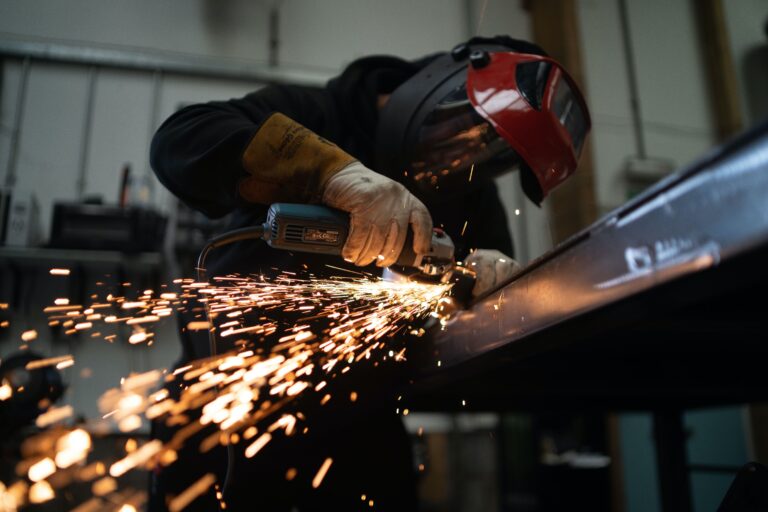Luca Greco is a student at Harvard Law School and a member of the Labor and Employment Lab.
Recently, the Wisconsin Senate voted to approve a law that would allow employers to keep teenage workers at work longer, in an effort to address the so-called labor shortage. Currently, teenagers may not work before 7 AM or past 7 PM. The proposed law would increase the upper bound to 9 PM during the summer, and would expand the range to 6 AM and 9:30 PM on a day preceding a school day, and 6 AM and 11 PM on days preceding non-school days.
While Wisconsin may be the first state to take this type of legislative action, teenage labor was a panacea for companies over the summer to fill their workforces. Rather than improving wages and working conditions to attract adult workers, employers and legislators are now working to expand the labor force and expose young workers to the long working hours, low wages, and poor conditions that drove adult workers away. This solution hurts adult workers who are forced to compete with a cheaper source of labor, and puts teenage workers, whom the law generally seeks to protect from working too many hours, at risk of further exploitation by employers. Though these young workers may face more extensive labor and employment law violations than older workers by virtue of their inexperience, they are positioned to act as the vanguard of a resurgent labor movement thanks to their economic flexibility and desire for systemic change.
Just How Bad Is It?
Much like adult workers, young workers are subject to unsafe working conditions, low pay, and rampant wage theft. Young workers, however, suffer these issues to a greater extent and severity than adult workers. Teenage workers are treated for workplace injuries in the emergency department at nearly twice the rate of older workers. In 2020, teens between the age of 15 and 19 required emergency room treatment for workplace related injuries every 5 minutes.
Moreover, teen workers are subject to extensive sexual assault and harassment. A 2002 study found that 35% of high school students working in part-time jobs while attending school were subject to sexual harassment. Studies have found that victims of sexual harassment in the workplace suffered “higher levels of stress, academic withdrawal, school absences, and demonstrate[d] depressive symptoms that lasted nearly 10 years after the incident.”
To compensate for these working conditions, teenagers are rewarded with lower wages than older workers. According to the Bureau of Labor Statistics, teenage workers earn minimum wage or less at nearly 5 times the rate of workers 25 or older. Carve outs in FLSA that permit teenage workers employed for fewer than 90 days to be paid as little as $4.25 per hour create a baseline wage far lower than other workers. Moreover, since many teens are only part-time workers, they do not receive benefits. As overall wages rise in response to the labor shortage, it is no surprise that employers are seeking to hire teen workers instead of more expensive adult workers.
Not only are these workers already receiving a lower wage than other employees in the labor market, but they also face significant wage theft. Of course, wage theft is not exclusive to teen workers, accounting for around $50 billion of stolen wages a year. Low wage workers in particular lose around $3,300 a year to wage theft. Teen workers, who are less familiar with the available legal protections and proper procedures, are less able to identify and combat such violations. All these violations amount to even lower wages for teen workers and corresponding lower costs for employers who use teenage labor.
Easy Targets
Teenage workers present vulnerabilities to exploitation that differ from adult workers. One issue is simply the lack of education on workplace protections. Many teenagers are often not sufficiently trained or informed of company policies and the legal protections in place to combat dangerous workplace conditions or wage violations. As new members of the workforce, teenagers simply do not have enough experience to understand when an employer is acting illegally by taking advantage of workers or putting them in dangerous situations.
Another problem is the natural power imbalance of a child employee and an adult supervisor, particularly when teenagers are often taught to respect and not question authority figures. In fact, the population of teen workers is particularly subject to exploitation by virtue of their participation in the labor force while in school. The teenage labor participation rate has consistently dropped over the past 40 years, with many students needing to focus their time on extracurricular activities and studying. Students that work necessarily have less time for studying, and students that dedicate 20 hours per week or more to working while in school suffer worse academic outcomes. Many teenage workers, therefore, are having to choose to work at the cost of their education in order to support themselves or their families. These workers are particularly vulnerable to exploitation, as a result.
Finally, it is possible that some teenage employees are simply not particularly concerned about workplace violations. Many teenagers only take on jobs in the summer, when they have free time that they do not have during the school year to make some money. Even for those that work during the school year, it is unlikely that many view their job as the career that they will pursue in the future, and therefore have a short-term outlook. These factors could mean that teenage workers know that they are being exploited and suffering poor working conditions, but the temporary nature of the employment stops them from speaking up.
The Kids Will Be Alright
Despite the historical exploitation of teenage workers, there may be hope that as they enter the workforce, these workers can fight back. Many teenagers do not have the same family obligations, expenses, debt, and rent or mortgage payments as older workers. As such, the same conditions that may prevent them from speaking up also offer teenagers far more flexibility to engage in collective action that could lead them to lose their jobs, or to quit outright. The desperation of employers to hire workers only bolsters this leverage, as many teen workers discovered this summer when quitting their jobs to find better employment. Social media can also embolden teenage workers to take action against poor working conditions, including the “antiwork” subreddit with more than 1 million members and a substantial number of “antiwork” TikToks, which often inform workers about poor working conditions and employees’ rights to combat them. As conversations between young workers around the country continue, we may see teenagers acting in solidarity against exploitative employers.
Teenagers have a long history as crucial elements of U.S. social movements, including abolition, the civil rights movement, the newsies and in modern movements like the Sunrise Movement and Black Lives Matter. Now, as more young workers enter the workforce, many of whom support economic systems that strengthen worker power, teenagers have the opportunity to fight for better protections and working conditions for all workers. Many young people are fed up with current state of the world, and the situation may be primed for them to organize for meaningful change.








Daily News & Commentary
Start your day with our roundup of the latest labor developments. See all
June 30
Antidiscrimination scholars question McDonnell Douglas, George Washington University Hospital bargained in bad faith, and NY regulators defend LPA dispensary law.
June 29
In today’s news and commentary, Trump v. CASA restricts nationwide injunctions, a preliminary injunction continues to stop DOL from shutting down Job Corps, and the minimum wage is set to rise in multiple cities and states. On Friday, the Supreme Court held in Trump v. CASA that universal injunctions “likely exceed the equitable authority that […]
June 27
Labor's role in Zohran Mamdani's victory; DHS funding amendment aims to expand guest worker programs; COSELL submission deadline rapidly approaching
June 26
A district judge issues a preliminary injunction blocking agencies from implementing Trump’s executive order eliminating collective bargaining for federal workers; workers organize for the reinstatement of two doctors who were put on administrative leave after union activity; and Lamont vetoes unemployment benefits for striking workers.
June 25
Some circuits show less deference to NLRB; 3d Cir. affirms return to broader concerted activity definition; changes to federal workforce excluded from One Big Beautiful Bill.
June 24
In today’s news and commentary, the DOL proposes new wage and hour rules, Ford warns of EV battery manufacturing trouble, and California reaches an agreement to delay an in-person work mandate for state employees. The Trump Administration’s Department of Labor has advanced a series of proposals to update federal wage and hour rules. First, the […]